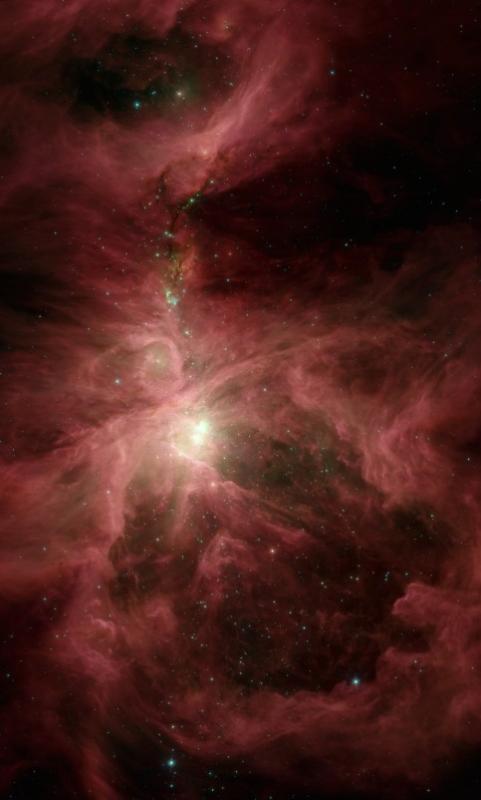Explanation: Few cosmic vistas excite the imagination like the Orion Nebula, an immense stellar nursery some 1,500 light-years away. Also known as M42, the nebula is visible to the unaided eye, but this stunning infrared view from the Spitzer Space Telescope penetrates the turbulent cosmic gas and dust clouds to explore the region in unprecedented detail. At full resolution, the remarkable image data yields a census of new stars and potential solar systems. About 2,300 young stars surrounded by planet-forming disks were detected based on the infrared glow of their warm dust, along with about 200 stellar embryos, stars too young to have developed disks. This 0.8 by 1.4 degree false-color image is about 20 light-years wide at the distance of the Orion Nebula.
1999 2000 2001 2002 2003 2004 2005 2006 2007 2008 2009 2010 2011 2012 2013 2014 2015 2016 2017 2018 2019 2020 2021 2022 2023 2024 2025 |
Yanvar' Fevral' Mart Aprel' Mai Iyun' Iyul' Avgust Sentyabr' Oktyabr' Noyabr' Dekabr' |
NASA Web Site Statements, Warnings, and Disclaimers
NASA Official: Jay Norris. Specific rights apply.
A service of: LHEA at NASA / GSFC
& Michigan Tech. U.
|
Publikacii s klyuchevymi slovami:
infrared - star formation - planet formation - Oblasti zvezdoobrazovaniya - zvezdoobrazovanie - infrakrasnoe izluchenie - Protoplanetnye diski
Publikacii so slovami: infrared - star formation - planet formation - Oblasti zvezdoobrazovaniya - zvezdoobrazovanie - infrakrasnoe izluchenie - Protoplanetnye diski | |
Sm. takzhe:
Vse publikacii na tu zhe temu >> | |
